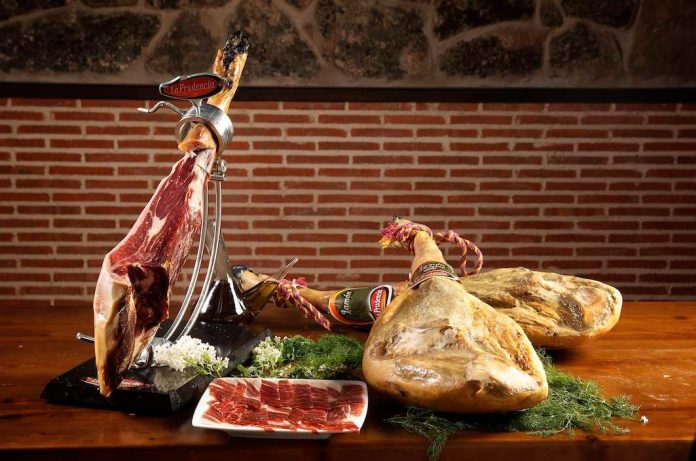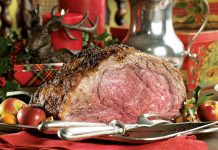Jamon is the essence of Spanish cooking, no menu is complete without it. Eat it straight from the ham or use it for cooking – it’s delicious.
Jamon Serrano is one of a range of cured jamons that Spain is famous for, it is traditionally cured in mountainous areas or serranos that have very cold dry winters.

What is a Jamon?
Jamon is the cured leg of a pig of which there are many varieties the most famous being Jamon Serrano and the Jamon Iberico. The different classifications depend on the type of pig, what it is fed on and its location.
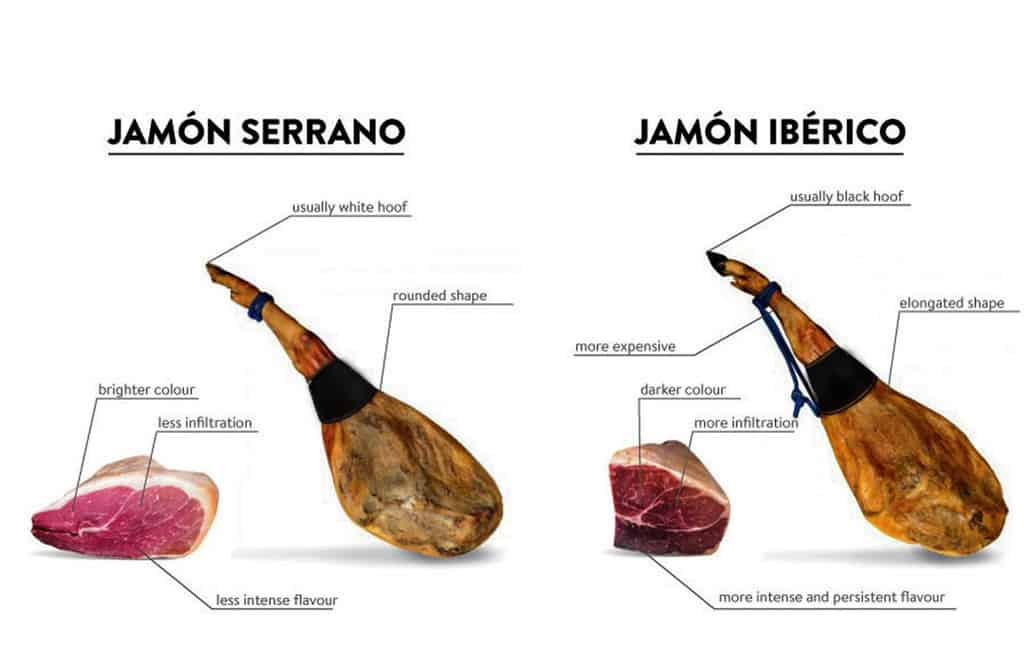
Jamon Iberico
The Iberian pig produces the most famous of the range of spanish cured hams. Only the meat that comes from an Iberian pig can be called Jamon Iberico or pata negra which means black leg.
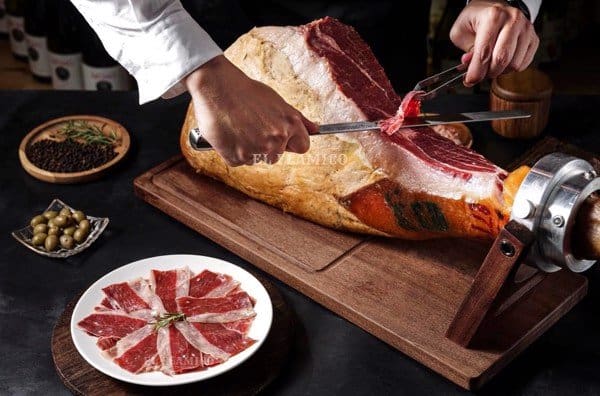
Jamon Iberico is divided into three categories
- Jamon Iberico de Bellota
- Jamon Iberico de Recebo
- Jamon Iberico
Jamon Iberico is the best quality and comes from free range pigs that live in the mountains and graze on bellotas the fruit of the holm oak tree.
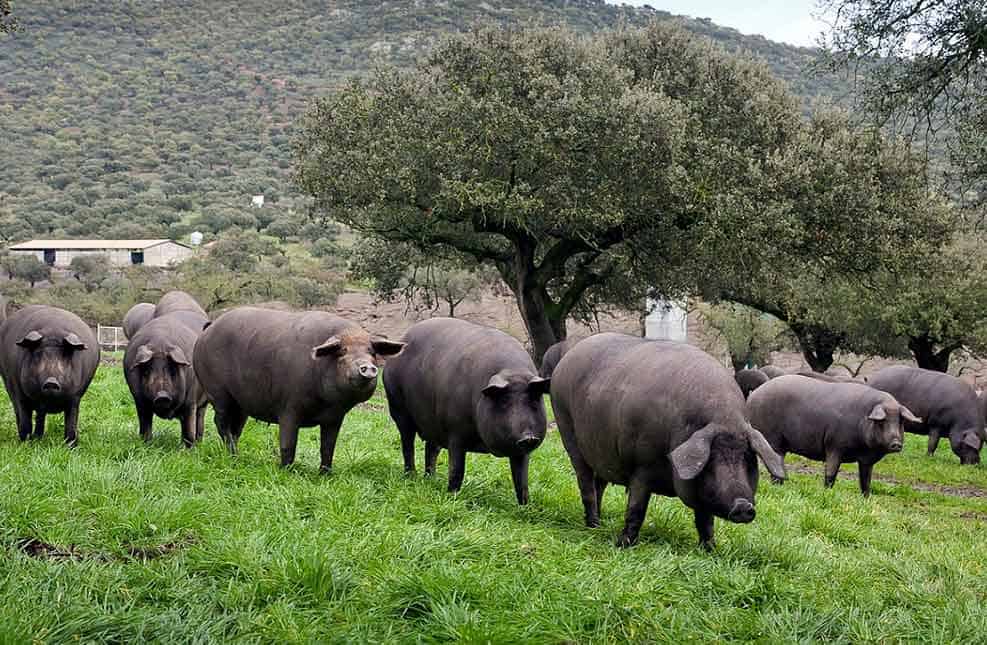
Jamon Iberico de Recebo and Jamon Iberico are still quality hams with great taste but the piag have not been fed on bellotas.
The Serrano hams
Serrano ham comes from ‘white pigs’ which produce the everyday ham found in most Spanish homes or that you would be given as tapas in bars and restaurants. They have nowhere near the flavour of Iberico ham but are widely consumed and enjoyed.
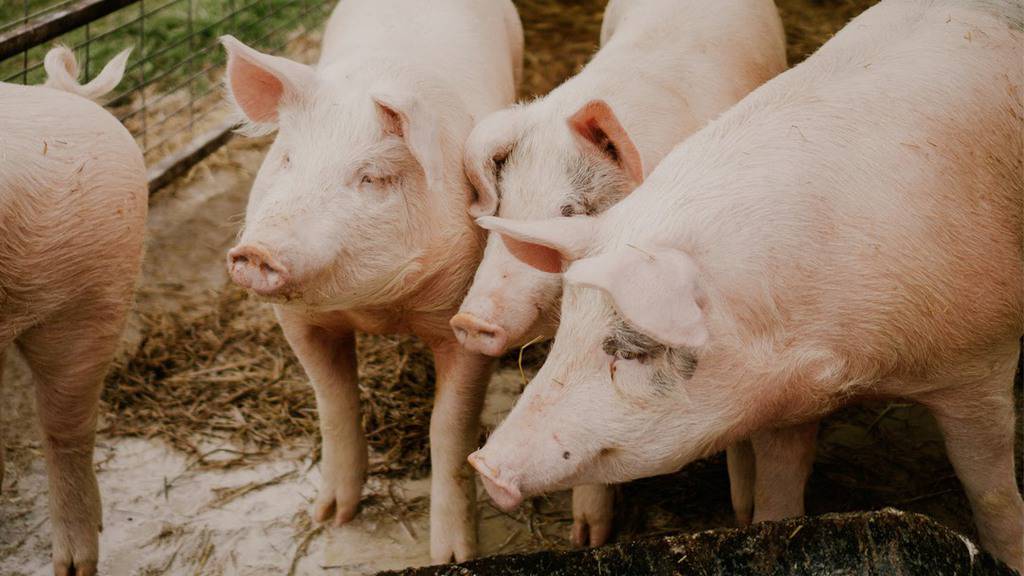
How is a jamon cured?
All four legs of the pig are prepared as jamon, first by salting for anything between 24 and 48 hours, then the jamon is cleaned and hung in a regulated temperature and humidity for 1 or 2 months.
The temperature and humidity is altered slightly and the hams are hung for a minimum of 12 months and for the high quality hams it can be as long as 36 months.
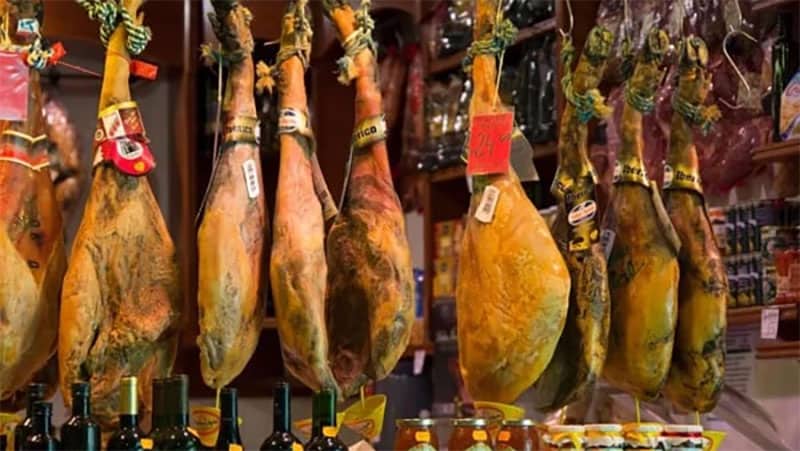
The curing process or maduracion happens in the last month of the preparation process when the ham will have lost around 40% of its original body weight.
It can now be eaten or allowed to mature even more, a ham stored for a further 12-14 is then a reserve ham, one that has been cured for another 14-18 months is a “gran reserva” ham and one that has been cured for another 18 months or more a gran reserve ham. As in a good wine it’s the waiting that produces the best.
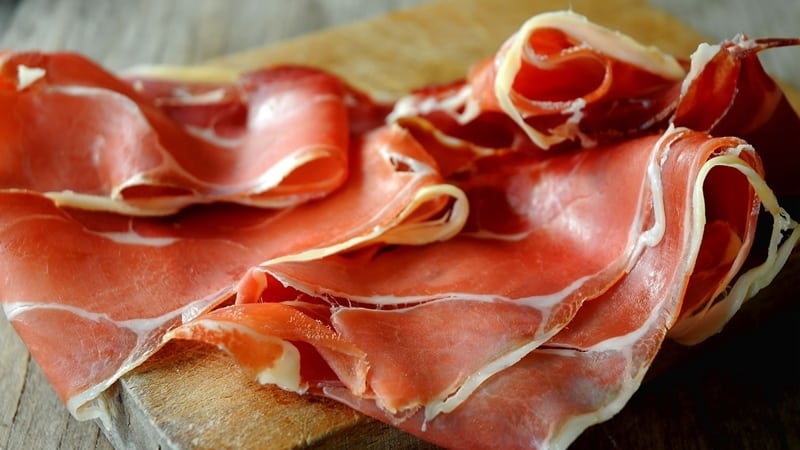
- What Is Aromatherapy Vs. What Are Essential Oils?
- What is La Tomatina in Bunol, Spain Like? What to Expect at the Famous Tomato Throwing Festival
How to Store a Jamon
A jamon usually comes in a breathable “ham sock” and can be kept like this for a year or so uncarved. But once the jamon has been started it really should be eaten within eight weeks.
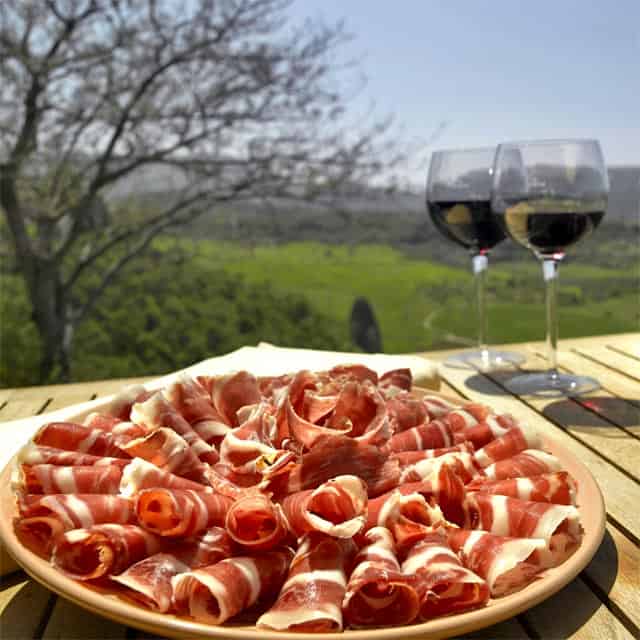
When the jamon is carved for the first time, keep the strips of fat that were cut off and use them to protect the open meat or paint the exposed meat with a little olive oil. Jamon shouldn’t be kept in a fridge but at cool and dry room temperature, ready to enjoy constantly!
Carving a Jamon
Making sure the Jamon is rigid, use a sharp knife and cut away the fat from the meat, but only where the meat is going to be carved. Don’t take off too much fat as it protects the meat until needed.
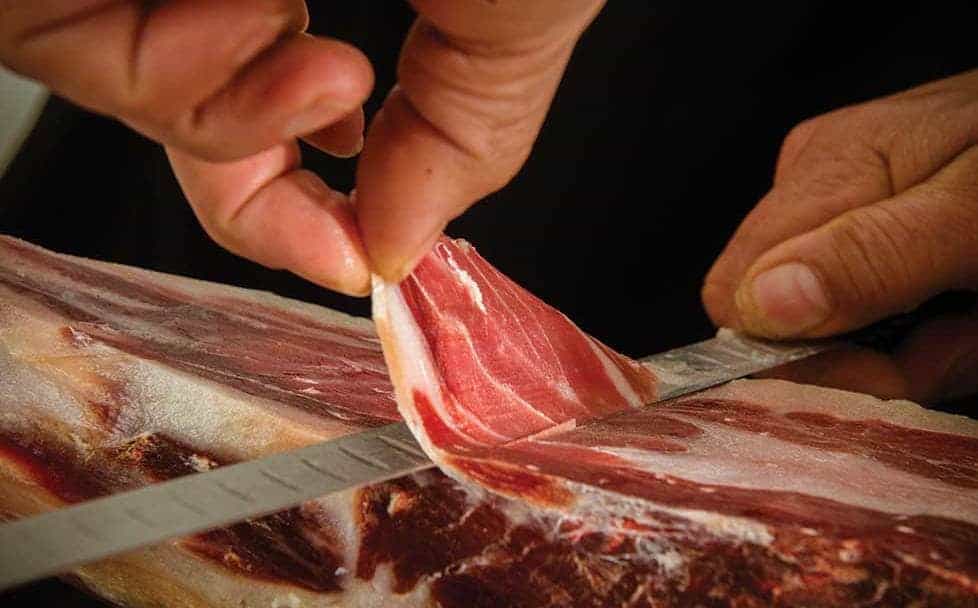
Start at the narrowest part and slice finely with a long, narrow knife, the Spanish say that the knife should be visible through the meat as it is being carved – yes, that thin!


